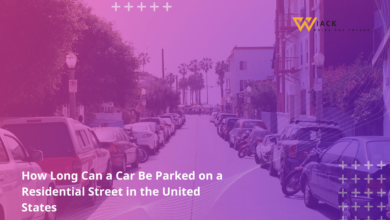How Much is Insurance for a New Driver?

Did you know that new drivers typically pay 44% more for car insurance than experienced drivers? This startling statistic highlights the significant financial impact that being a novice on the road can have on your wallet. Understanding why insurance costs are so high for new drivers and how to navigate this challenge is crucial for anyone just starting their driving journey.
Introduction
Getting your driver’s license is an exciting milestone, but it often comes with a hefty price tag in the form of high insurance premiums. Let’s dive into why insurance for new drivers is so expensive and what factors influence these costs.
The High Cost of Insurance for New Drivers
Insurance companies view new drivers as high-risk clients, and for good reason. Statistics show that inexperienced drivers are more likely to be involved in accidents. According to the National Highway Traffic Safety Administration, teen drivers (aged 16-19) are nearly three times more likely than drivers aged 20 and older to be in a fatal crash.
This increased risk translates directly into higher insurance premiums. On average, a new driver can expect to pay anywhere from $1,500 to $3,000 or more annually for car insurance, depending on various factors. This is a significant expense, especially for young drivers who may be on a tight budget.
Factors Influencing Insurance Rates for New Drivers
Several key factors contribute to the high cost of insurance for new drivers:
- Lack of driving experience: Without a track record of safe driving, insurers have to assume the worst.
- Age: Younger drivers, particularly teenagers, are statistically more likely to be involved in accidents.
- Type of vehicle: The car you drive can significantly impact your insurance rates.
- Location: Where you live and drive affects your risk profile.
- Coverage levels: The more comprehensive your coverage, the higher your premiums.
Understanding these factors can help new drivers make informed decisions about their insurance and potentially find ways to reduce their costs.
Factors Affecting New Driver Insurance Costs
Let’s take a deeper look at the various factors that influence insurance costs for new drivers. Understanding these elements can help you navigate the insurance landscape more effectively.
Age and Driving Experience
Age and driving experience are perhaps the most significant factors affecting insurance rates for new drivers. Here’s why:
- Statistical risk: Younger drivers, especially teenagers, are statistically more likely to be involved in accidents. The Centers for Disease Control and Prevention (CDC) reports that the risk of motor vehicle crashes is higher among 16-19-year-olds than among any other age group.
- Lack of driving history: Without a track record of safe driving, insurers have to rely on statistical averages, which tend to be unfavorable for young, inexperienced drivers.
- Cognitive development: Research suggests that the part of the brain responsible for decision-making and risk assessment isn’t fully developed until around age 25, which can lead to riskier driving behaviors in younger drivers.
- Gradual improvement: Insurance rates typically decrease as drivers gain more experience and reach certain age milestones (21, 25, 30, etc.).
For example, a 16-year-old new driver might pay up to $6,000 per year for full coverage insurance, while a 25-year-old new driver might pay closer to $2,000 for the same coverage.
Driving Record
Your driving record is a crucial factor in determining your insurance rates, even as a new driver. Here’s what you need to know:
- Clean slate advantage: As a new driver, you start with a clean driving record, which is good. However, any infractions can quickly lead to rate increases.
- Impact of violations: Traffic violations, such as speeding tickets or running red lights, can significantly increase your insurance rates. For new drivers, these increases can be even more substantial than for experienced drivers.
- Accidents: Being involved in an accident, especially if you’re at fault, can dramatically increase your insurance premiums. For new drivers, this increase can be particularly steep.
- Importance of safe driving: Maintaining a clean driving record is one of the most effective ways for new drivers to keep their insurance costs down over time.
- Monitoring period: Many insurers have a probationary period for new drivers, during which they closely monitor driving behavior. Staying violation-free during this time can lead to lower rates.
For instance, a single speeding ticket could increase a new driver’s insurance rates by 20-40%, while an at-fault accident could lead to increases of 50% or more.
Vehicle Type and Value
The type of car you drive plays a significant role in determining your insurance rates. For new drivers, choosing the right vehicle can make a big difference in insurance costs. Here’s what to consider:
- Safety features: Cars with advanced safety features like anti-lock brakes, airbags, and electronic stability control often qualify for lower insurance rates.
- Vehicle value: More expensive cars cost more to insure because they’re more costly to repair or replace. For new drivers, a moderately priced car can help keep insurance costs down.
- Vehicle type: Sports cars and high-performance vehicles are typically more expensive to insure, especially for new drivers. Family sedans and small SUVs often have lower insurance rates.
- Theft rates: Some cars are more likely to be stolen than others. Driving a car with low theft rates can help reduce your insurance premiums.
- Repair costs: Cars that are expensive to repair will have higher insurance rates. Domestic models often have lower repair costs than luxury foreign brands.
For example, a new driver insuring a Honda Civic might pay around $2,500 annually for full coverage, while the same driver insuring a sports car like a Mustang GT could pay $4,000 or more.
Location and Zip Code
Where you live has a significant impact on your insurance rates, even as a new driver. Here’s why location matters:
- Urban vs. rural: Generally, urban areas have higher insurance rates due to increased traffic density and higher crime rates. Rural areas often have lower rates.
- State regulations: Insurance regulations vary by state, affecting base rates. For example, Michigan is known for having some of the highest insurance rates in the country due to its unique no-fault insurance laws.
- Local crime rates: Areas with higher vehicle theft or vandalism rates will have higher insurance premiums.
- Weather risks: Locations prone to severe weather events (like hurricanes or hail storms) often have higher insurance rates due to increased risk of vehicle damage.
- Traffic patterns: Areas with higher rates of accidents or traffic violations will generally have higher insurance premiums.
For instance, a new driver in Los Angeles might pay $3,500 annually for full coverage insurance, while the same driver in a rural area of Idaho might pay only $1,800.
Coverage Levels and Deductibles
The level of coverage you choose and your deductible amount significantly impact your insurance rates. For new drivers, finding the right balance is crucial. Here’s what you need to know:
- Minimum coverage: While opting for minimum coverage required by your state can lower your premiums, it may not provide adequate protection, especially for new drivers who are at higher risk of accidents.
- Comprehensive and collision coverage: These coverages protect your vehicle but increase your premiums. They’re often required if you’re financing or leasing a car.
- Deductibles: Choosing a higher deductible can lower your premiums, but make sure you can afford to pay the deductible if you need to make a claim.
- Additional coverages: Options like roadside assistance or rental car coverage can be particularly useful for new drivers but will increase your overall costs.
- Liability limits: Higher liability limits provide better protection but increase premiums. For new drivers, it’s often recommended to have higher limits due to increased accident risk.
For example, a new driver might pay $2,000 annually for state minimum coverage, $2,500 for standard coverage with a $1,000 deductible, or $3,000 for comprehensive coverage with a $500 deductible.
Credit Score
Surprisingly, your credit score can have a significant impact on your insurance rates in many states. This factor can be particularly challenging for young new drivers who may not have established credit yet. Here’s what you should know:
- Credit-based insurance scores: Many insurers use credit-based insurance scores to help determine rates. These scores are similar to, but not identical to, regular credit scores.
- Impact on rates: Drivers with poor credit can pay up to 2.5 times more for insurance than those with excellent credit, according to Consumer Reports.
- Building credit: For young new drivers, starting to build good credit early can help lower insurance rates over time.
- State regulations: Some states, like California, Hawaii, and Massachusetts, prohibit the use of credit scores in determining insurance rates.
- Regular reviews: If your credit improves, you can ask your insurer to review your rates. This can be particularly beneficial for new drivers as they establish credit history.
For instance, a new driver with no credit history might pay $3,000 annually for full coverage insurance, while the same driver with excellent credit might pay $2,200.
Gender
Gender is another factor that can influence insurance rates for new drivers, although its impact has been decreasing in recent years. Here’s what you need to know:
- Statistical differences: Historically, young male drivers have been considered higher risk than young female drivers, leading to higher rates for males.
- Narrowing gap: The difference in rates between male and female drivers has been decreasing, especially as drivers get older.
- State regulations: Some states, like California, Hawaii, Massachusetts, Michigan, Montana, North Carolina, and Pennsylvania, have banned the use of gender in determining insurance rates.
- Age impact: The impact of gender on insurance rates is most significant for teenage drivers and tends to decrease with age.
- Other factors: While gender can play a role, other factors like driving record and vehicle type often have a more significant impact on rates.
For example, a 16-year-old male new driver might pay $6,500 annually for full coverage insurance, while a 16-year-old female new driver might pay $5,700 for the same coverage.
Marital Status
Believe it or not, your marital status can affect your insurance rates, even as a new driver. Here’s how:
- Statistical correlation: Married individuals are statistically less likely to file insurance claims, leading to lower rates.
- Age factor: The impact of marital status on insurance rates is often more significant for younger drivers.
- Combined policies: Married couples can often save money by combining their insurance policies, which can be particularly beneficial if one spouse is a new driver.
- State regulations: Some states have restrictions on using marital status as a factor in determining insurance rates.
- Other factors: While marital status can influence rates, factors like driving record and vehicle type typically have a more significant impact.
For instance, a single 22-year-old new driver might pay $2,800 annually for full coverage insurance, while a married 22-year-old new driver might pay $2,500 for the same coverage.
Tips for Reducing Insurance Costs as a New Driver
While insurance for new drivers is typically expensive, there are several strategies you can employ to help reduce your costs. Let’s explore some effective ways to lower your insurance premiums.
Take a Defensive Driving Course
One of the most effective ways for new drivers to potentially lower their insurance costs is by taking a defensive driving course. Here’s why it’s beneficial:
- Insurance discounts: Many insurance companies offer discounts to drivers who complete approved defensive driving courses. These discounts can range from 5% to 20%.
- Skill improvement: These courses teach valuable skills that can make you a safer driver, reducing your risk of accidents and violations.
- Traffic violation point reduction: In some states, completing a defensive driving course can remove points from your driving record, which can help keep your insurance rates lower.
- Long-term benefits: The skills learned in these courses can help you maintain a clean driving record over time, leading to lower insurance rates in the future.
- Online options: Many defensive driving courses are now available online, making them convenient and accessible for busy new drivers.
For example, a new driver who completes a defensive driving course might see their annual insurance premium reduced from $3,000 to $2,700, saving $300 per year.
Maintain a Good Driving Record
Maintaining a clean driving record is crucial for keeping your insurance costs down, especially as a new driver. Here’s how to do it:
- Obey traffic laws: Always follow speed limits, stop signs, and other traffic rules. Even minor violations can significantly increase your rates.
- Avoid distractions: Never text while driving, and limit other distractions like eating or adjusting the radio while on the road.
- Don’t drink and drive: DUI convictions can dramatically increase your insurance rates and may even make it difficult to find coverage.
- Practice defensive driving: Always be aware of your surroundings and anticipate potential hazards on the road.
- Regular vehicle maintenance: Keep your car in good condition to reduce the risk of accidents due to mechanical failures.
For instance, a new driver with a clean record might pay $2,500 annually for full coverage insurance, while the same driver with a speeding ticket could see their rate increase to $3,125 or more.
Consider a Car with Safety Features
The type of car you drive can significantly impact your insurance rates. Opting for a vehicle with advanced safety features can help lower your premiums. Here’s what to look for:
- Anti-lock brakes (ABS): This feature prevents wheel lock-up during hard braking, improving control and potentially qualifying for insurance discounts.
- Electronic stability control (ESC): ESC helps prevent skidding and loss of control, reducing the risk of accidents.
- Airbags: The more airbags a car has, the safer it’s considered, which can lead to lower insurance rates.
- Automatic emergency braking (AEB): This feature can automatically apply the brakes to prevent or reduce the severity of a collision.
- Lane departure warning: This system alerts drivers when they’re drifting out of their lane, helping prevent accidents.
For example, a new driver insuring a basic model car without these features might pay $3,000 annually, while the same driver insuring a car with all these safety features might pay $2,700 or less.
Shop Around for Quotes
One of the most effective ways to ensure you’re getting the best rate on your insurance is to shop around and compare quotes from multiple providers. Here’s how to do it effectively:
- Get multiple quotes: Obtain quotes from at least three different insurance companies. Rates can vary significantly between providers.
- Use online comparison tools: Many websites allow you to compare quotes from multiple insurers at once, saving you time and effort.
- Consider local insurers: While national companies are well-known, local or regional insurers may offer competitive rates, especially for new drivers.
- Look beyond price: While cost is important, also consider factors like customer service ratings and claims handling reputation.
- Review regularly: Insurance rates can change over time, so it’s a good idea to shop around annually or whenever your circumstances change.
For instance, a new driver might receive quotes ranging from $2,500 to $3,500 for the same coverage from different insurers. By shopping around, they could potentially save $1,000 per year.
Bundle Policies
If you have multiple insurance needs, bundling your policies with one insurer can lead to significant savings. Here’s how bundling can benefit new drivers:
- Multi-policy discounts: Many insurers offer discounts when you bundle auto insurance with other policies like renters or homeowners insurance.
- Family plans: If you’re a young new driver, being added to your parents’ policy can often be cheaper than getting your own separate policy.
- Simplified management: Bundling policies with one insurer can make it easier to manage your insurance needs and payments.
- Loyalty benefits: Some insurers offer additional perks or discounts to customers who bundle multiple policies.
- Potential for better coverage: Bundling might allow you to afford better coverage within your budget.
For example, a new driver might pay $3,000 for standalone auto insurance, but by bundling with a renters insurance policy, they might reduce their total insurance costs to $2,700, saving $300 annually.
Look for Discounts
Insurance companies offer a variety of discounts that can help new drivers reduce their premiums. Here are some discounts to look out for:
- Good student discount: Many insurers offer discounts to students who maintain good grades (typically a B average or higher).
- Low mileage discount: If you don’t drive much, you may qualify for a low mileage discount.
- Safe driver discount: Some insurers offer discounts for maintaining a clean driving record over time.
- Vehicle safety discount: Cars with certain safety features may qualify for additional discounts.
- Paid-in-full discount: Paying your entire premium upfront rather than in monthly installments can often lead to savings.
- Paperless discount: Opting for electronic billing and communication can sometimes result in a small discount.
- Professional organization or alumni discounts: Some insurers offer discounts to members of certain professional organizations or university alumni.
For instance, a new driver who qualifies for a good student discount and opts for paperless billing might see their annual premium reduced from $3,000 to $2,550, saving $450 per year.
Conclusion
Navigating the world of car insurance as a new driver can be challenging, but understanding the factors that influence your rates and knowing how to potentially reduce your costs can make a significant difference.
Summary of Key Factors Affecting Insurance Costs
Let’s recap the main factors that influence insurance costs for new drivers:
- Age and driving experience
- Driving record
- Vehicle type and value
- Location and zip code
- Coverage levels and deductibles
- Credit score
- Gender
- Marital status
Each of these factors plays a role in determining your insurance rates, with some having more impact than others depending on your specific situation.
Importance of Shopping Around and Comparing Quotes
One of the most crucial steps in finding affordable insurance as a new driver is to shop around and compare quotes from multiple insurers. Remember:
- Rates can vary significantly between insurance companies
- Online comparison tools can make the process easier
- Consider both national and local insurers
- Look beyond just the price to factors like customer service and claims handling
- Review your options regularly, especially as you gain more driving experience
By taking the time to compare quotes, you could potentially save hundreds or even thousands of dollars per year on your insurance premiums.
The Importance of Responsible Driving
Perhaps the most important factor in managing your insurance costs over time is practicing responsible driving. As a new driver, establishing good habits from the start can have long-lasting benefits:
- Safety first: Always prioritize safe driving practices. This not only helps keep your insurance costs down but, more importantly, keeps you and others safe on the road.
- Continuous improvement: As you gain more experience, continue to refine your driving skills. Consider taking advanced driving courses as you progress.
- Long-term savings: Maintaining a clean driving record over time can lead to significant insurance savings as you transition from a new driver to an experienced one.
- Set a good example: If you’re a young new driver, demonstrating responsible driving can help influence your peers positively.
- Financial responsibility: Understanding the costs associated with driving, including insurance, can help you develop better overall financial habits.
Remember, while the cost of insurance for a new driver can be high, it’s a necessary expense that protects you financially and legally. By understanding the factors that influence your rates and taking steps to manage your costs, you can find a balance between adequate coverage and affordability.
As you gain more experience on the road, continue to review your insurance needs and options. What works best for you as a new driver may change as you become more experienced. Stay informed, drive safely, and don’t hesitate to reach out to insurance professionals for advice tailored to your specific situation.
Becoming a safe, responsible driver is a journey that extends far beyond passing your driving test. It’s a lifelong commitment to safety, responsibility, and continuous improvement. As you embark on this journey, remember that your actions behind the wheel not only affect your insurance rates but also play a crucial role in keeping our roads safe for everyone.
Get the latest car news, reviews, and prices at Wiack.com. Your one-stop destination for all things automotive.





